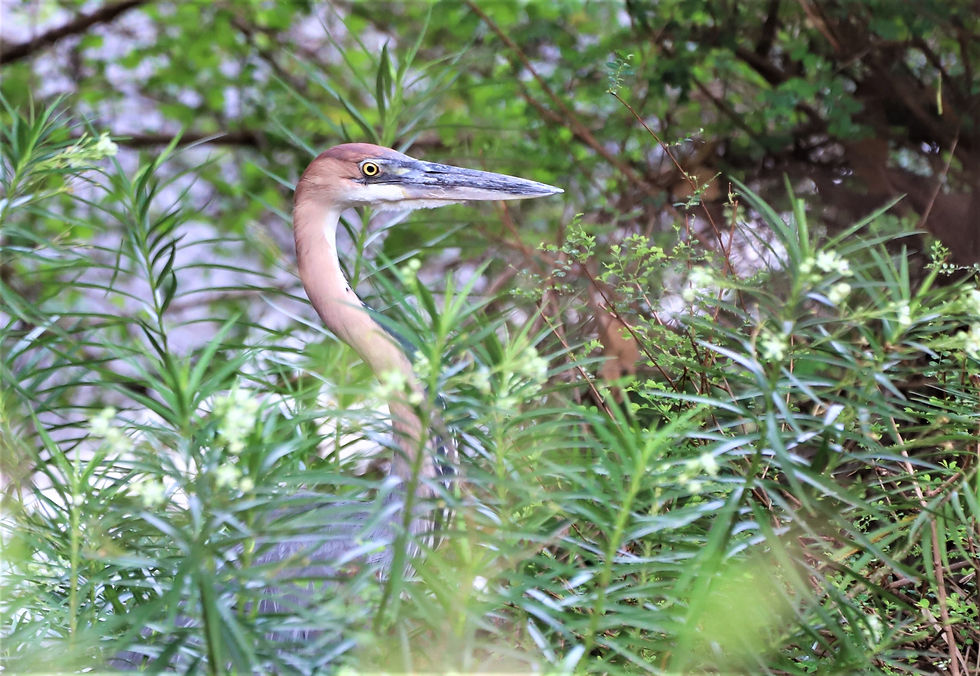Mission Possible: IBCP presents at University of Göttingen
- IBCP

- Feb 8, 2023
- 2 min read
Updated: Feb 9, 2023
8 February, 2023

The world’s largest heron, the Goliath Heron (Ardea goliath) benefits greatly from protected areas. Photo by Nico Arcilla.
IBCP’s Nico Arcilla presented at the University of Göttingen, Germany, to Prof. Matthias Waltert’s International Nature Conservation seminar online on 31 January, 2023. She discussed research revealing long-term trends in bird numbers in response to habitat management and other human activities on conservation land on two continents. Entitled “Mission Possible: Collaboration for Effective Conservation,” the presentation included two examples of using birds as indicators of conservation success through long-term research. In West Africa, populations of rain forest birds, including both understory birds and hornbills, showed severe declines in protected forests due to illegal logging and poaching. In the North American Great Plains, grassland songbirds showed severe declines in conservation grasslands after American bison were reintroduced.

The Winding Cisticola (Cisticola lateralis) is at home in grasslands with scattered trees. Photo by Nico Arcilla.
How can scientists be more effective in informing conservation strategies? Coordinating separate research efforts over time can give us long-term data on how birds are faring in response to conservation efforts. In some cases, governments and institutions may promote and reward conservation strategies that are not effective for various reasons (such as unchecked illegal activities and other conflicts of interest), resulting in wildlife declines. This shows us how important it is to conduct empirical evaluations of conservation outcomes, which unfortunately is rarely done. The journal Conservation Evidence summarizes and analyzes the documented evidence for the effectiveness of conservation actions. The website Conservation Effectiveness is a participatory effort investigating how well conservation strategies are working. The conservation news service Mongabay has a part in this effort and many relevant articles. Anyone can get involved by asking questions, examining the evidence, and contributing to improving conservation practice!

The Red-billed Hornbill (Tockus erythrorhynchus) nests inside sealed tree holes for protection from predators; females seal the cavities from the inside and males feed their mates and chicks through a narrow slit. Photo by Nico Arcilla.




Comments